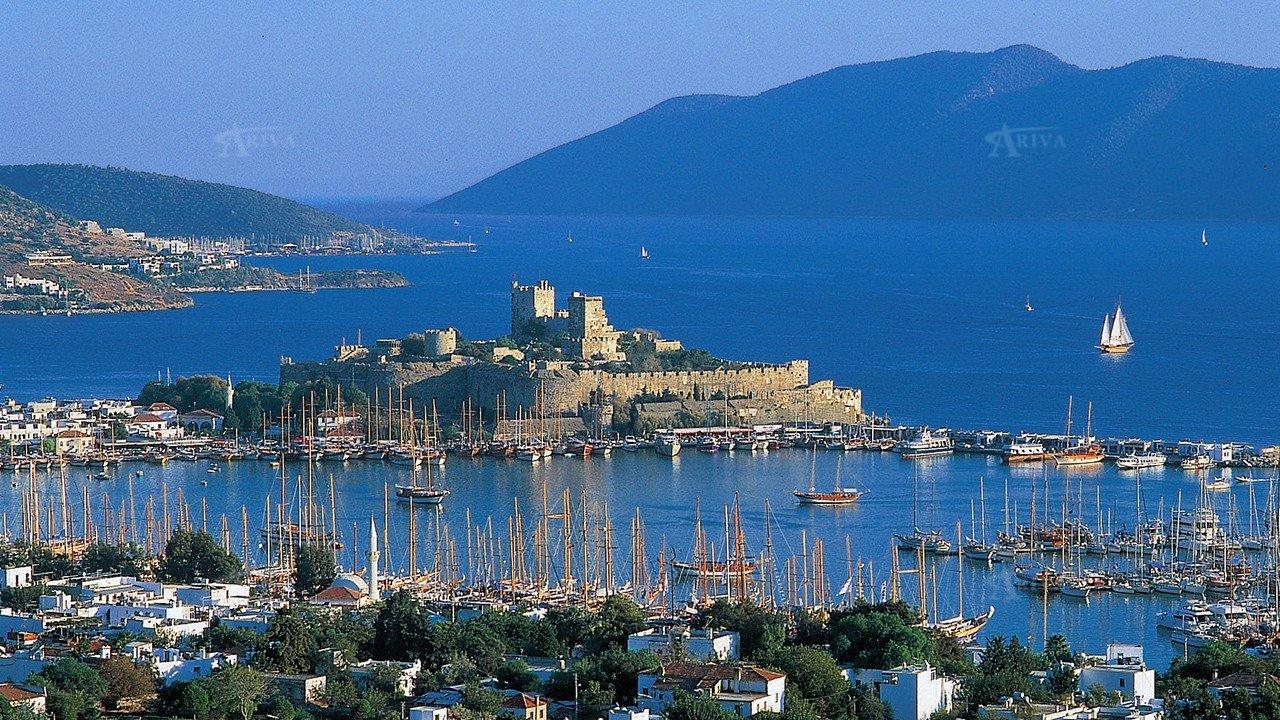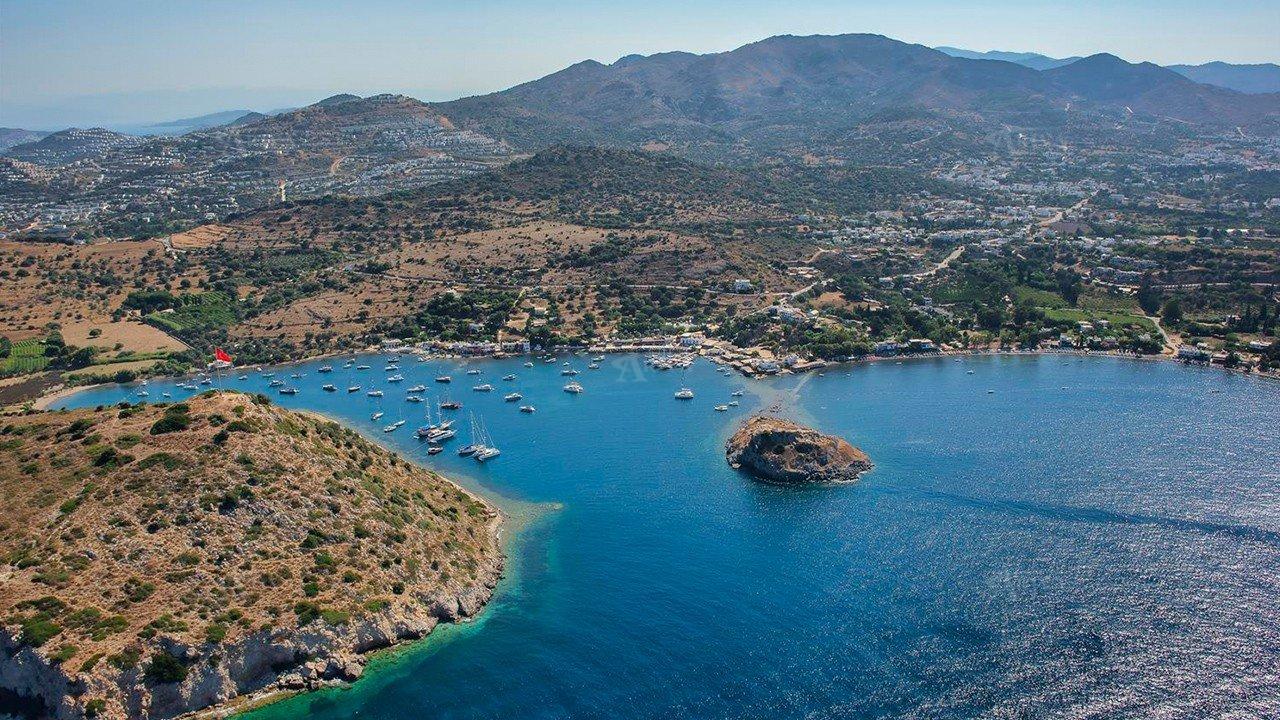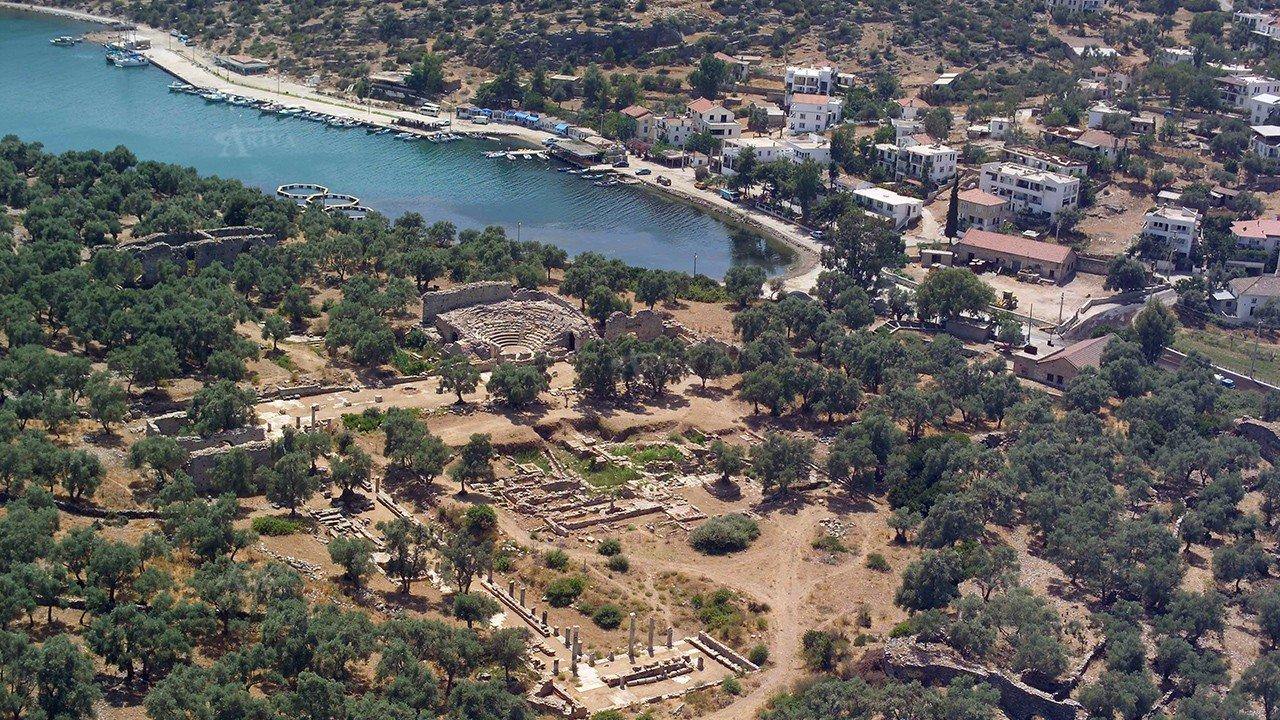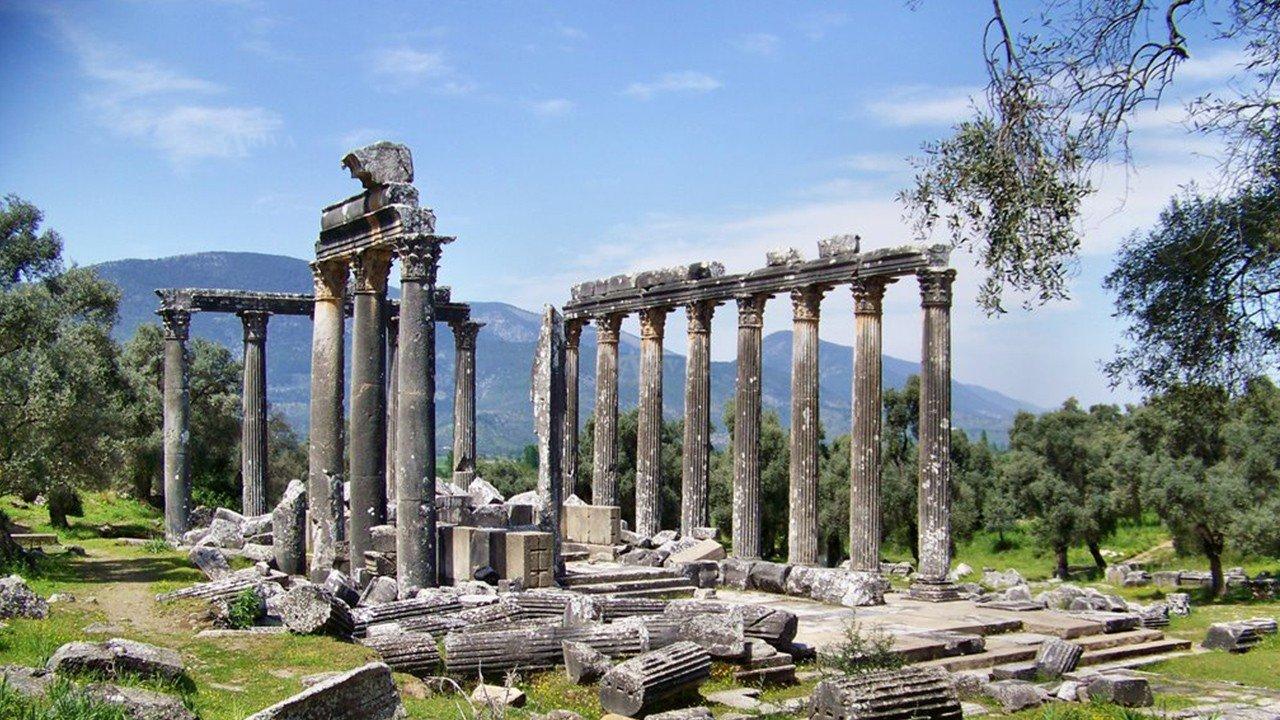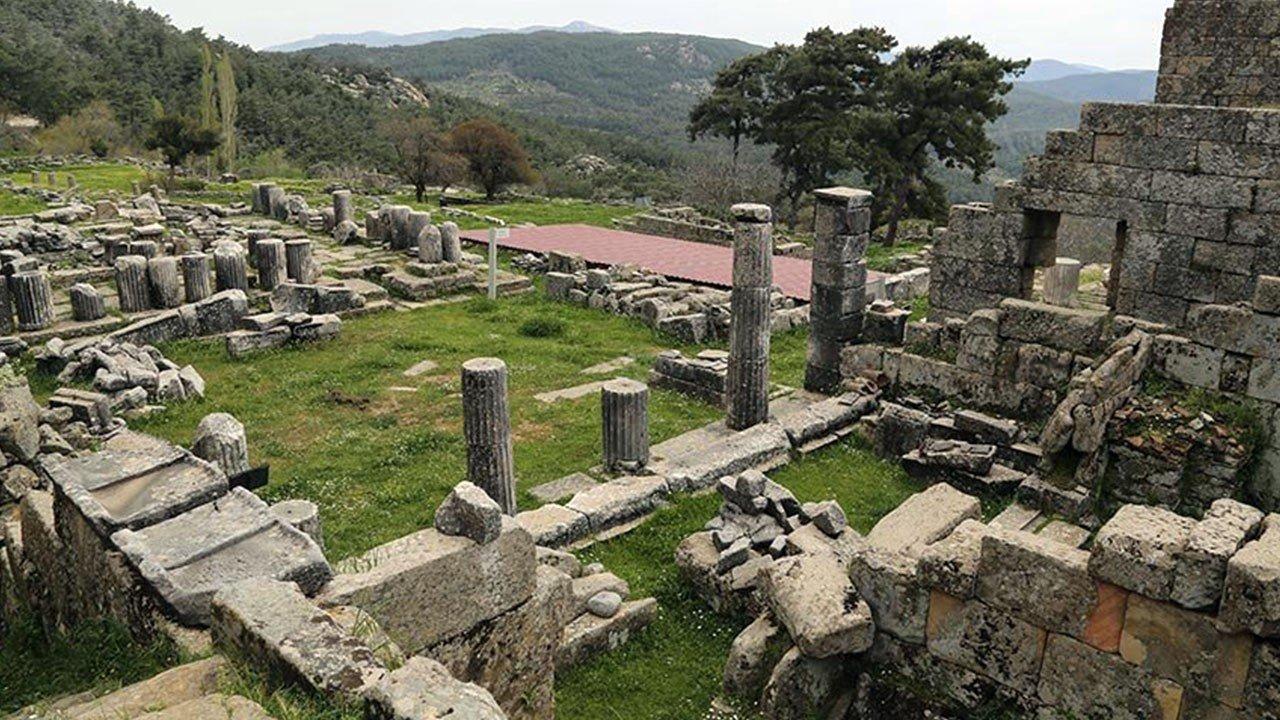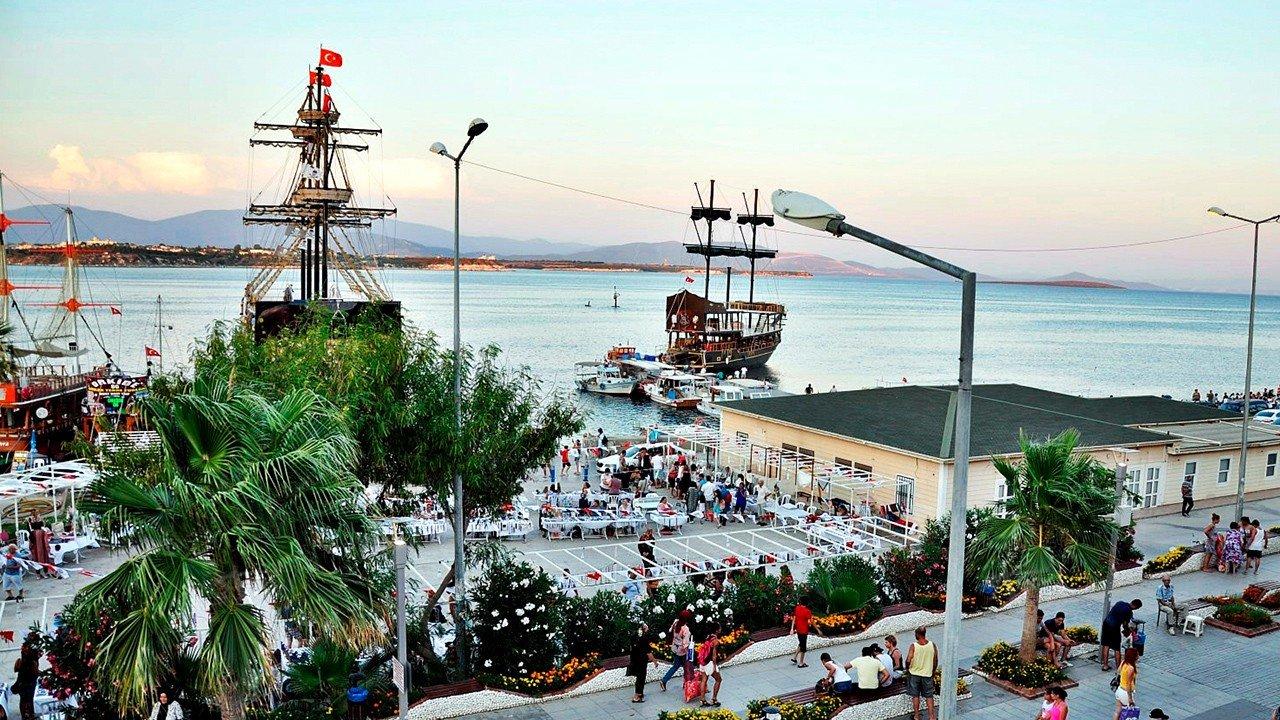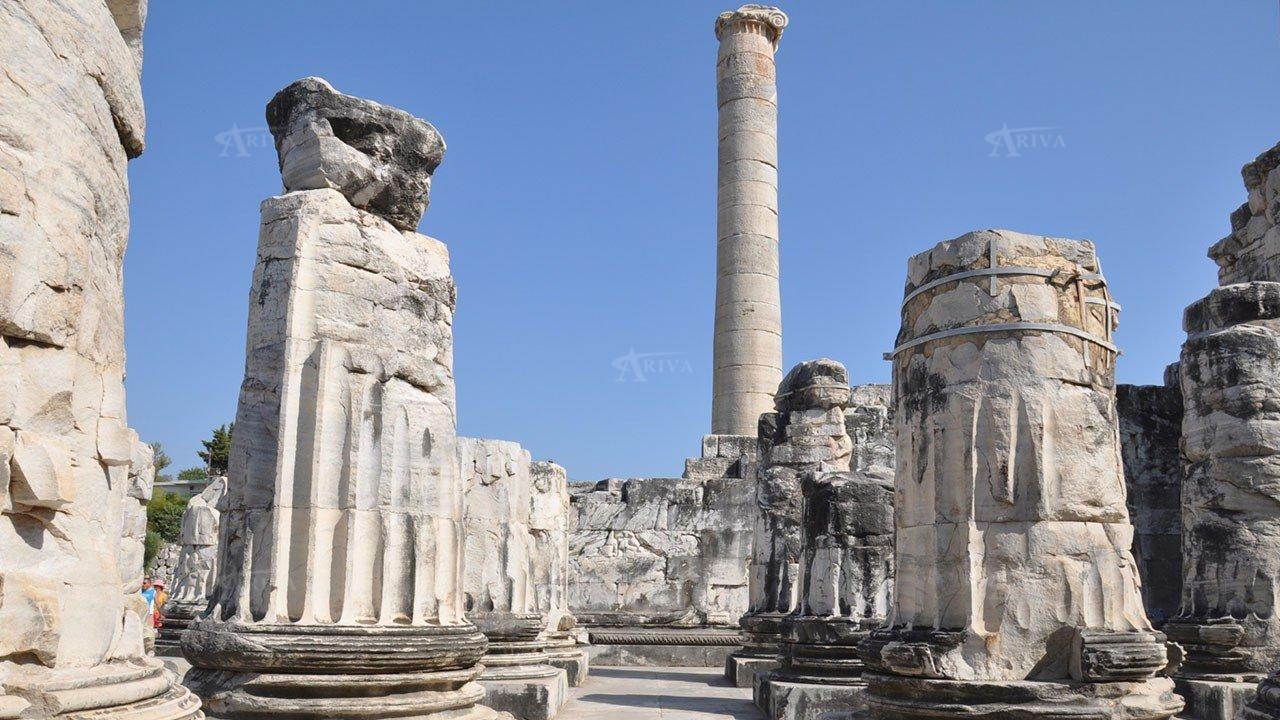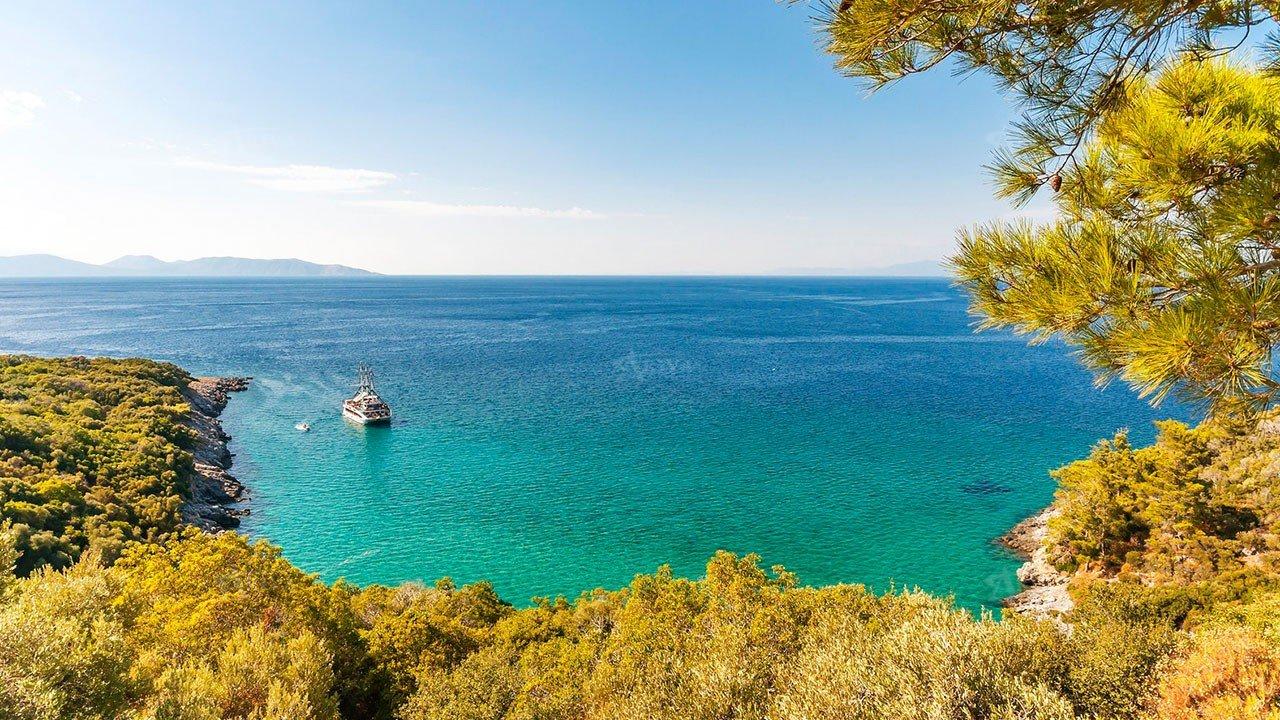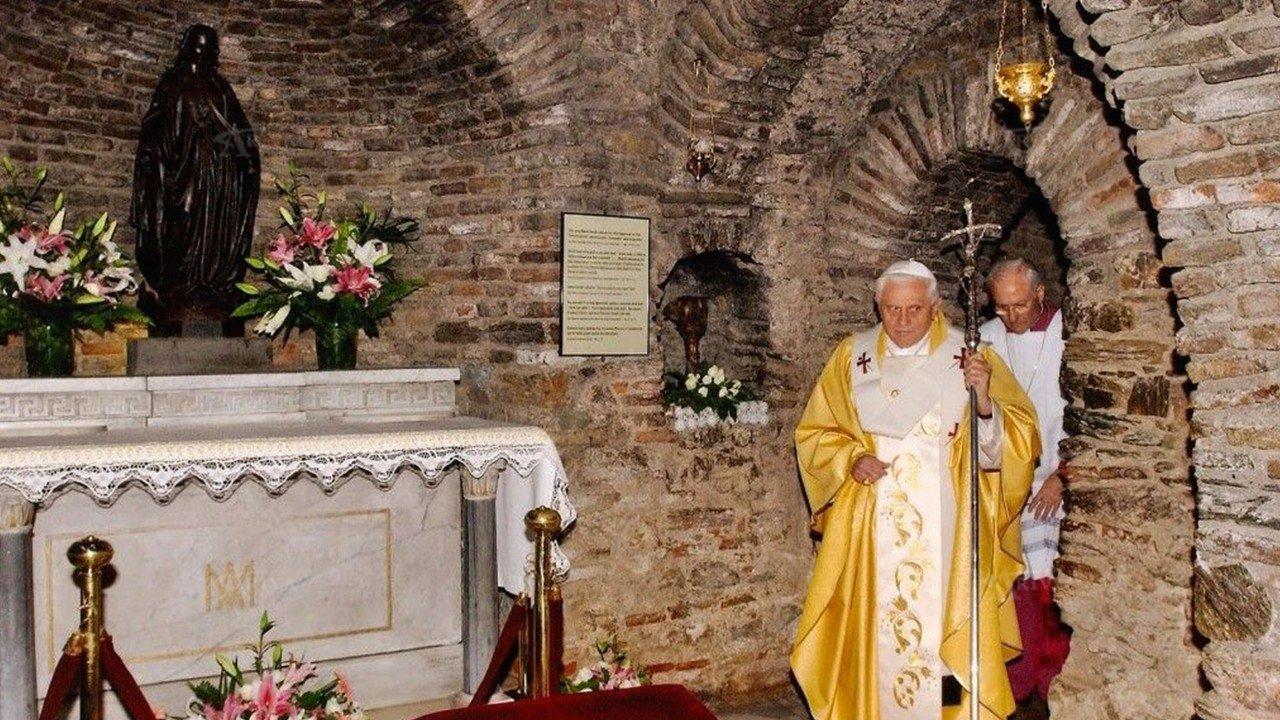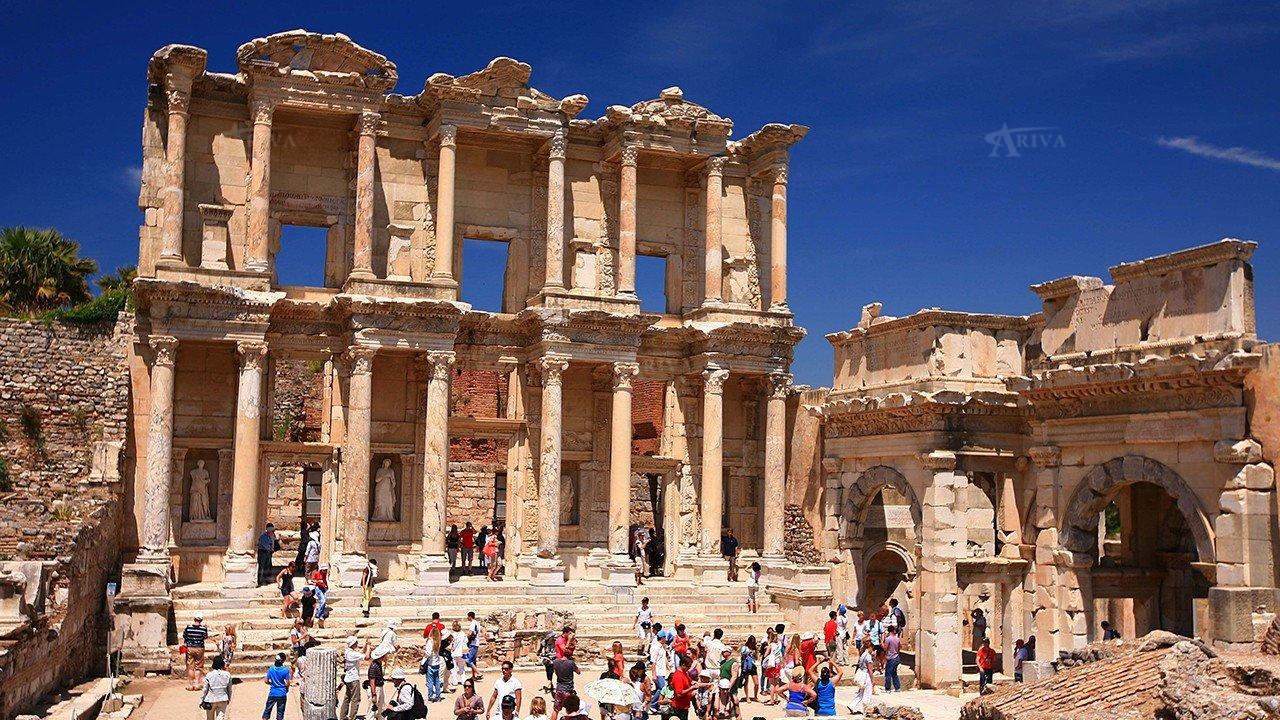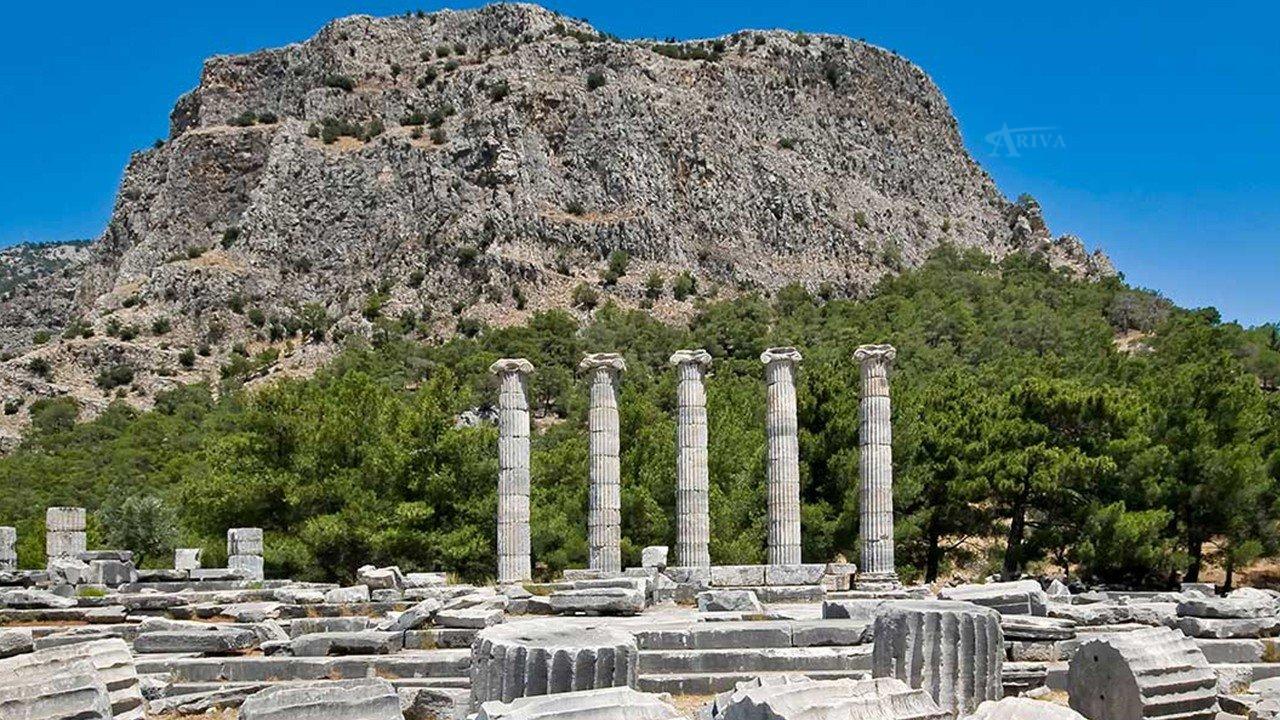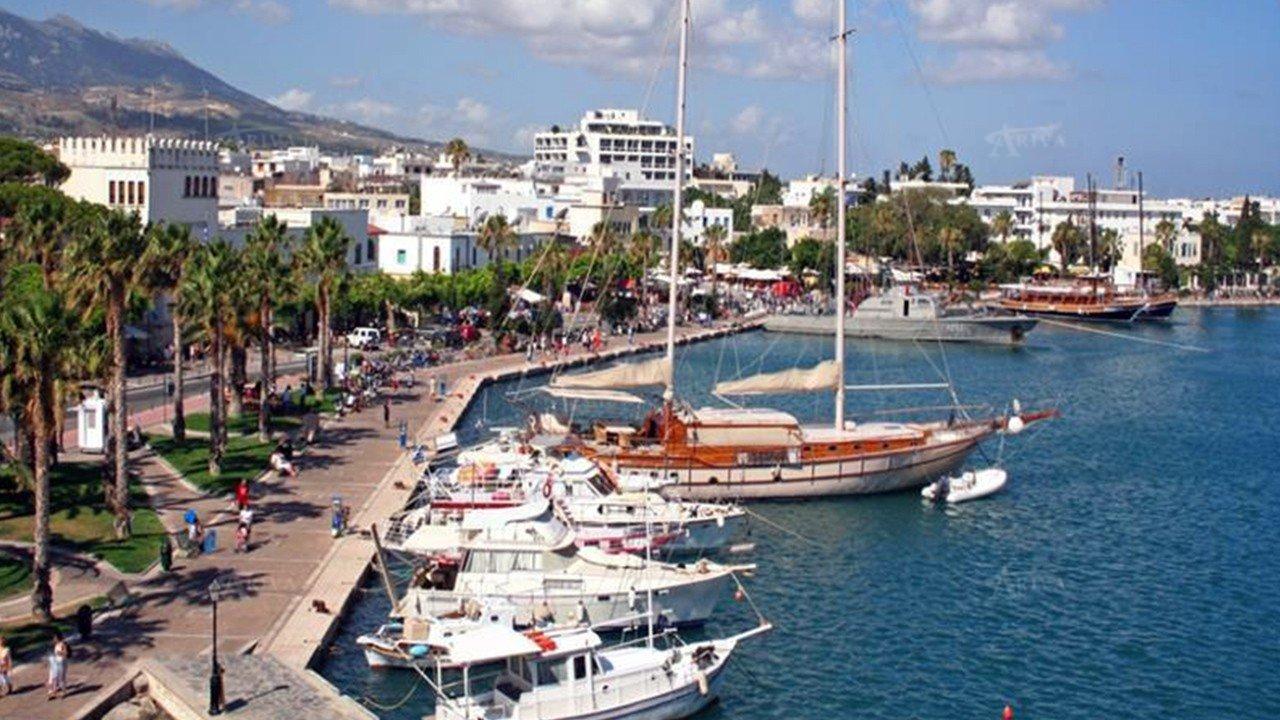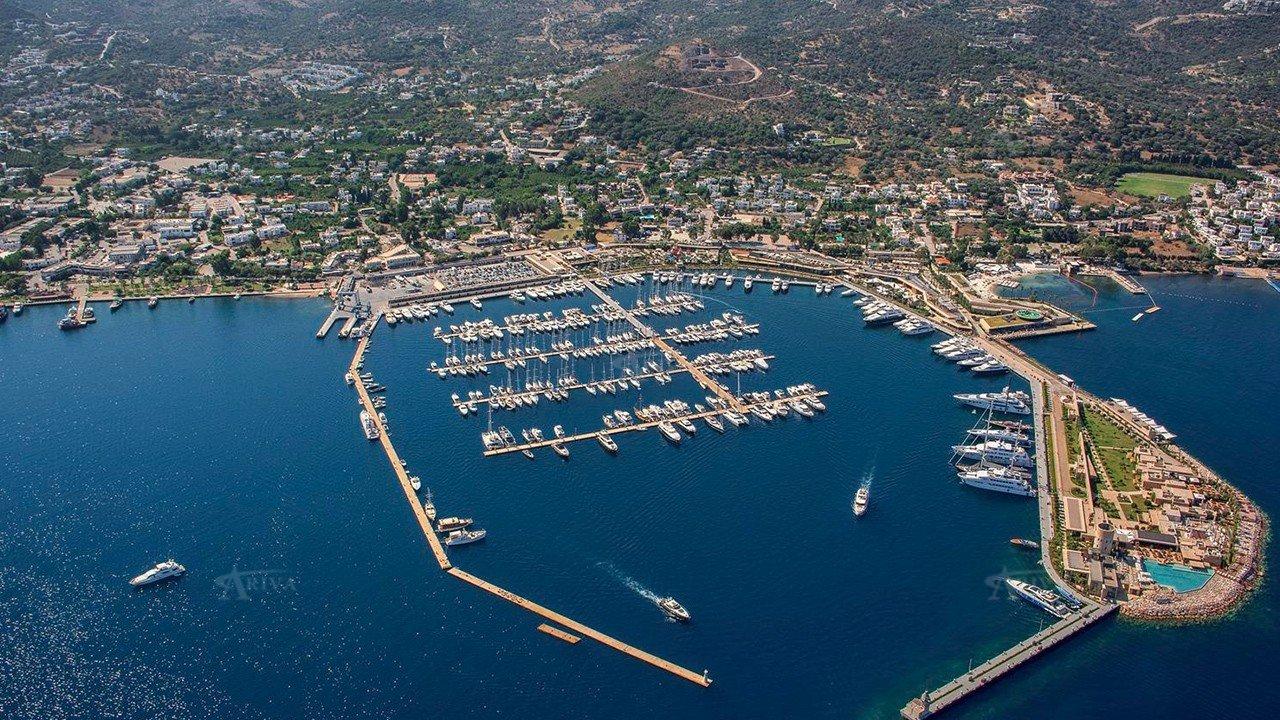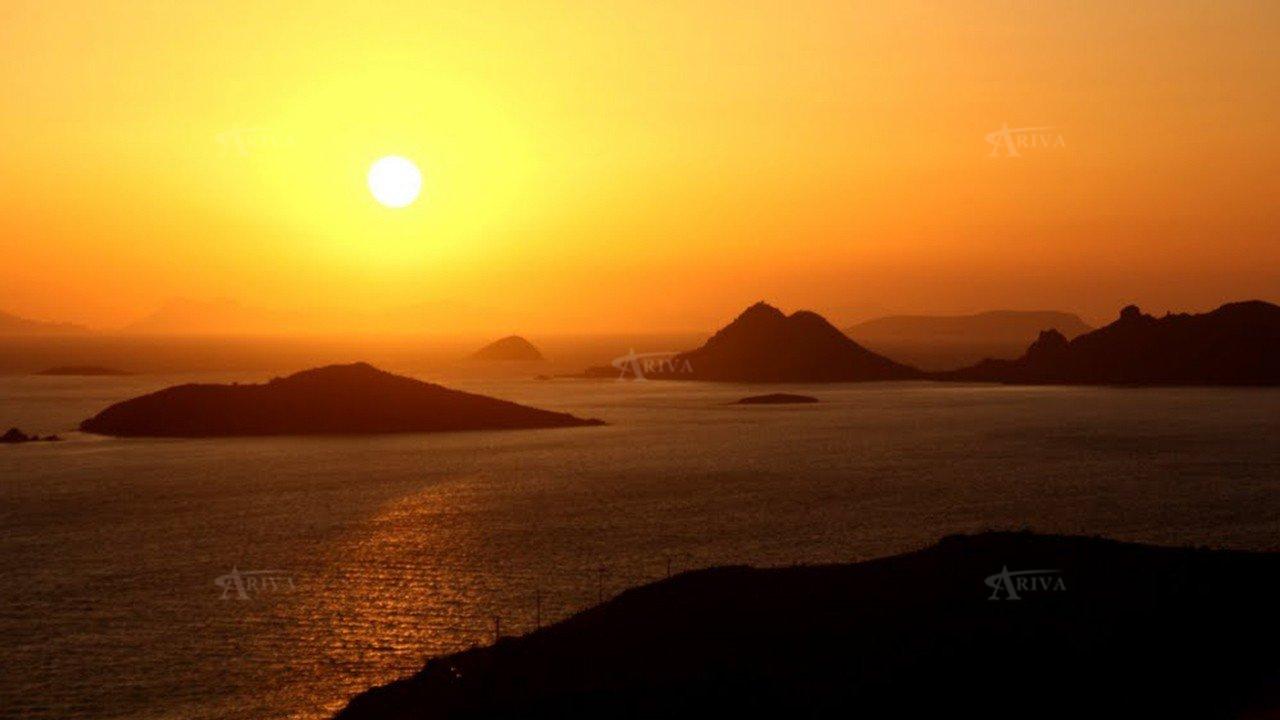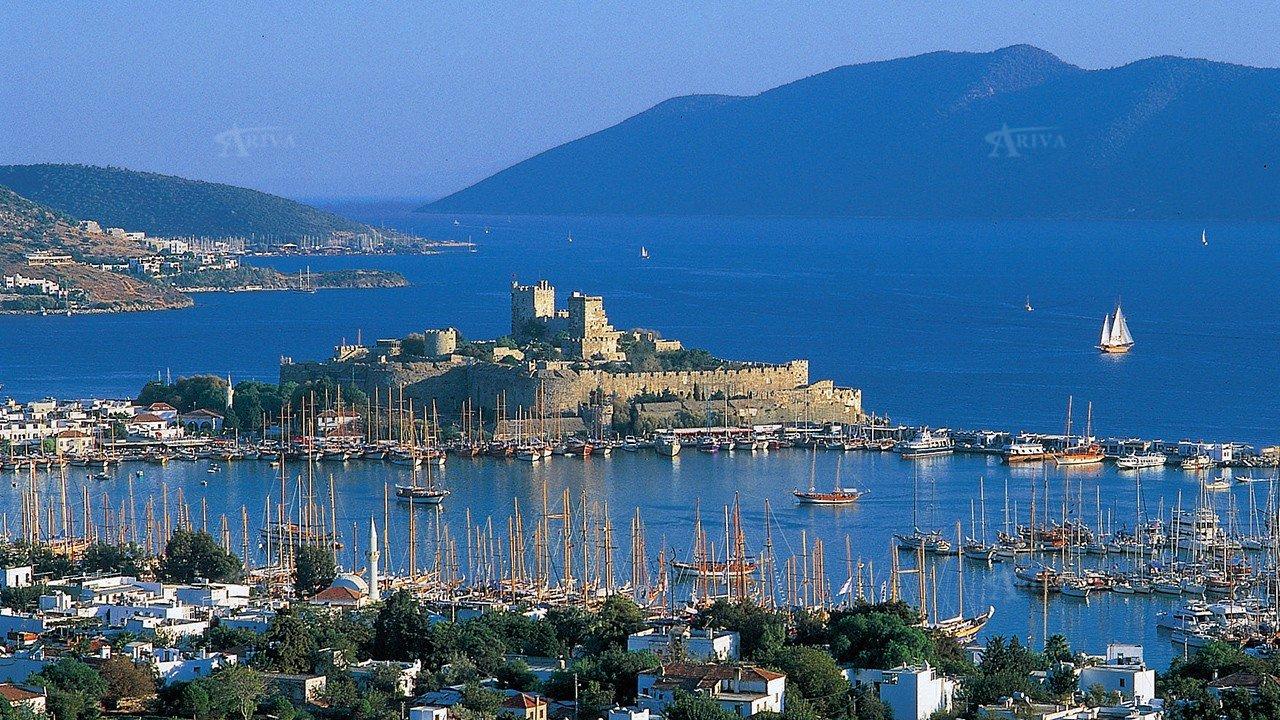Cruising from Bodrum to Ephesus - An Archaeological Adventure
You will start your tour by discovering Bodrum with your guide while your yacht is waiting for you in Gümüşlük.
Bodrum, ancient Halicarnassus is one of the best historical and important city of Mediterranean. Our archaeological adventure starts with exploring to Bodrum's most important parts.
Bodrum Castle and Museum
One of the world's finest museums of underwater archeology housed in a superb 15th century castle built by the Knights of St. John of Rhodes. The world's oldest known shipwreck exhibition is now open. This star attraction rates a 'must see' on everyone's list.
The Mausoleum
The Mausoleum of Halikarnassus was one of the Seven Wonders of the Ancient World. Its site is on open-air museum visited with awe for the accomplishments of the ancients. Its monumental statuary is in the British Museum but some artifacts and replicas of its friezes can be seen on the site.
Amphitheater
Seating about 13.000 spectators the theater dates to the region of Mausolus but with modifications added by the Romans. With rock tombs above, the site provides an unequalled view of the city.
Myndos Gate
This western city gate built by Mausolus in 364 B.C. has been recently restored. Composed of four towers it stood against Alexander the Great and his Macedonian troops. Surviving portions of the city wall are under restoration. After city tour, we will drive to Gümüşlük for embarkation.
Gumusluk used to be just a traditional fishing village in the South West of Turkey but times have changed with tourism. It is still fairly peaceful and one of its attractions is the ancient city of Myndos. The landscape is interesting and the flora is unique, two reasons why visitors will enjoy walking in this region. The beaches are very nice and nearby restaurants offer excellent fresh seafood. (Please let us know if do you prefer do have your first dinner at one of the very famous Gümüşlük Restaurant before your arrival.)
After breakfast, cruising to the Iasos. Ancient Iasos a Carian city that was once an island and prospered from its excellent harbour, rich fishing grounds and red-tinted marble quarried in the nearby hills. Today, the walled acropolis-fortress stands high above the fishing harbour. Across the isthmus linking the village with Iasos are the excellent remains of a bouleuterion, with four stairs dividing the seat rows, a huge agora, the scant remains of a theatre and, to the south, a Roman stoa from the 2nd century AD dedicated to Artemis Astias. Dinner and overnight stay will be in the harbour of Iasos.
After a healthy breakfast on board, we will leave the yacht for a visit to The Templa of Zeus in Euromos. The most important, and also the best-preserved building in Euromos is the Temple of Zeus. It is believed that already in the 5th century BC, a temple dedicated to Zeus stood at the foot of the hill. Its erection could be a symbol of the Hellenization process of these areas of Asia Minor, and the replacement of local, mostly female Anatolian deities, with the gods of the Greek pantheon.
In front of the temple, on the eastern side, the remains of an altar have been discovered. The inscription on it states that the sanctuary was dedicated to Zeus Lepsynos. The meaning of 'Lepsynos' nickname remains a mystery, but scholars believe that it is a word derived from the Carian language.
On the western slope of the hill, there are the remains of a small theater. Only five rows of seats have been preserved. The theater can be seen to the west of the temple.
Within the city agora, that was once surrounded on all sides by colonnaded porticoes, only several fragments of columns are visible.
After visiting Zeus Temple we will walk into the mountains to Labranda. Labraunda is an archaeological site worth visiting. The most ancient findings belong to the year 600 BC.The area that was used as holy area in the 6th and the 5th centuries and then as temple terrace consisted of a single, small, artificial terrace.
The 4th century BC is the most important period for the temple. At the times of the satraps named Mausolos (377 - 352 BC) and Idrieus (351 - 344 BC), this place gained a new appearance. In 355, during the sacrifice festival in Labranda, Mausolos escaped from an assassination attempt on his life at the last moment. Buildings such as a series of artificial terraces, one or two entrance buildings, a small Dor building (probably a fountain building), monumental stairs, two large feast halls (androns), a shed building (called oikoi), Stoa and Zeus Temple surrounded with columns must have been constructed after this event. With the death of Idrieus in 344, such works have been stopped. Because of the big fire disaster that took place in the 4th century BC, the holy area has lost its feature of being a cult place.
In the afternoon we will back to our yacht for having swim, fun and doing water sports. Dinner and overnight stay in close bay Iasos.
Il nostro autista ci prenderà da Iasos per visitare il Tempio di Apollo.
Dopo questo viaggio nel tempo ad Apollo, torneremo al nostro yacht per fare un giro nella penisola di Dilek per un pernottamento. e cena.
Il Parco Nazionale della penisola di Dilek a Kusadasi è tra i più importanti patrimoni naturali della Turchia, con una superficie di 27.598 ettari.
da, le spiagge di Kalamaki contano diverse baie, le più importanti sono: Icmeler, Kavakli e Karapinar. Tutte le spiagge del Parco Nazionale della penisola di Dilek meritano una visita. Ci sono anche alcune specie in via di estinzione nel parco nazionale. Anadolu Pars è l'esempio più tipico di queste specie. Nel parco non ci sono solo molte specie di rettili, mammiferi e uccelli, ma anche qui vivono quasi tutte le specie ittiche e le tartarughe marine del Mediterraneo. Le foche monache protette nei paesi mediterranei sono anche tra gli abitanti della zona. Il villaggio di Guzelcamli fu utilizzato come luogo di aggregazione per il centro politico e scientifico di Ionia nel IX e VIII secolo aC.
Kusadasi is a major port facing due west into the Aegean Sea. It is 90 kms south of Izmir and has become a major cruise ship port of call, due among other things to the proximity of such historical treasures as Ephesus and the Temple of Artemis, the House of the Virgin Mary and the Basilica of St. John in nearby Selcuk. From Kusadasi we drive to Selçuk for visiting Virgin Mary House and Ephesus.
The house of Virgin Mary is a typical Roman architectural example, entirely made of stones. In the 4th century AD, a church, combining her house and grave, has been built. The original two-stored house, which consisted of an anteroom (where today candles are proposed), bedroom and praying room (Christian church area) and a room with fireplace (chapel for Muslims). A front kitchen fell into ruins and has been restored in 1940's. Today, only the central part and a room on the right of the altar are open to visitors. From there one can understand that this building looks more like a church than a house. Another interesting place is the "Water of Mary", a source to be found at the exit of the church area and where a rather salt water, with curative properties, can be drunk by all.
Paul VI was the first pope to visit this place in the 1960's. Later, in the 1980's, during his visit, Pope John-Paul II declared the Shrine of Virgin Mary has a pilgrimage place for Christians. It is also visited by Muslims who recognize Mary as the mother of one of their prophets. Every year, on August 15th a ceremony is organized to commemorate Mary's Assumption.
This enclosure for archaeological remains at Ephesus elegantly reconciles historic conservation with accessibility for visitors. The site of a succession of great ancient civilizations, Ephesus, on the south-west coast of modern Turkey, embodied a peculiarly fertile synthesis of architecture and culture. In 356BC the Greeks built the Artemesium (a colossal Ionic temple dedicated to Artemis the fertility goddess) which was one of the Seven Wonders of the ancient world. During the 2nd century BC, Ephesus was the fourth largest city in the eastern Roman Empire, famous for its Artemesium, the Library of Celsus and its medical school. For more information please visit http://www.ephesus.us/ephesus/ephesus.htm
We will back to the yacht for dinner and overnight stay. You will notice a lot of visitors drop anchor nearby, Kusadasi has emerged as a major tourist attraction site with bars, cafes and restaurants.
Our driver will pick you up from Kusadasi to visit Priene and Miletus. Meanwhile Our yacht will be crusing during the day from Kusadasi to Didim to meet with us after our visit to Priene and Miletus
The ancient city of Priene is famous for its dramatic setting on flat table land overlooking the broad expanse of the Meander River flood plain with the steep rock of Mount Mykale at its back. It's worth visting today for its situation, its well-preservedtheater and bouleuterion (council chamber), and the remains of its grand Temple of Athena, a work of Pythius of Halicarnassus, the architect of the famed Mausoleum. Founded by the legendary Aegyptus, Priene prospered around 550 BC, but was captured by Cyrus of Persia in 545 BC. It was a center for activities of the Ionian League around 300 BC. It later became a Roman city, then Byzantine, and was still active when captured by the Turks in the late 1200s.
Miletus is known for its gigantic 25,000-seat Hellenistic theater, located on the southern edge of the Meander River flood plain, 22 km (14 miles) south of Priene, Miletus was an important Ionian city for 1400 years, from about 700 BC to 700 AD. According to a legend, Miletus was founded by a hero named Miletos.
The view from the top is excellent, revealing the theater itself, the flood plain, and the other remains of ancient Miletus including the Northern and Southern Agoras and traces of the city walls, bouleuterion, Baths of Faustina, stadium and other structures, all now badly ruined.
Re-joining our yacht in Didim. Didim gets its name from the ancient Didyma. Didim town centre is located between the Apollo Temple and Altinkum, which is the beach resort, and is 3.5km from the coastal area and 1.5km from the Temple of Apollo. Overnight and dinner will be in one of the bays near Didim.
Yalikavak on the North West of the Peninsula used to be famous for its sponges and the divers skilled in finding them. It was the main economic activity. It has become increasingly popular with tourists who can enjoy the lovely coves. Sunset from the hills are stunning while the white windmills are a feature of the area. Yachtsmen know Yalikavak well and it has all the facilities that they need as they sail in these waters.
The Turkish Island of Catalada, (formerly known as Volo) is just 3 miles off the Turgutreis in the west of the Bodrum Peninsula on the Turquoise Coast of South West Turkey. The island gets its name because of three conical hills on it; literally it means ''fork island''. Overnight and dinner will be in Catalada.
At the end of a charter holiday, and following a hearty breakfast, guests leave their charter yacht with wonderful memories of their time at sea. If they have yet to see what Bodrum has to offer, they should certainly do so before returning home. There is a well-developed tourist infrastructure with plenty of nice restaurants, bars and lively nightlife.

